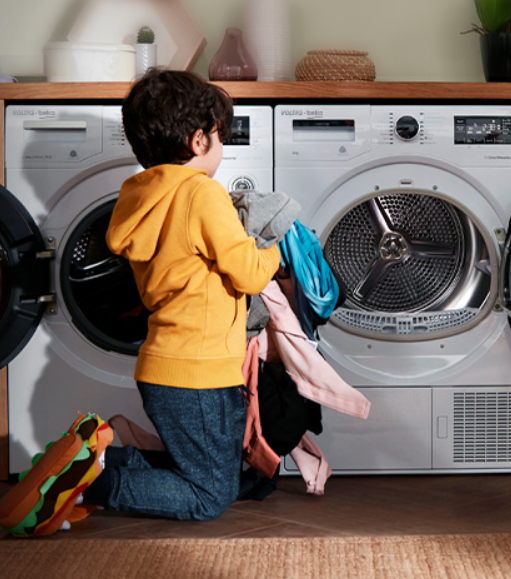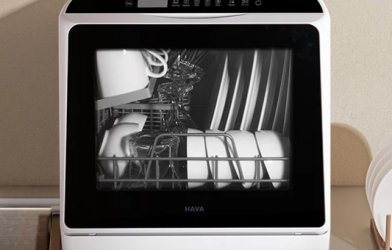Subtotal $0.00
When shopping for a new washer and dryer, one of the first decisions you’ll face is whether to go with a front-load or top-load machine. Both options have distinct advantages and some drawbacks, and choosing the right one depends on your laundry routine, available space, and budget. In this guide, we’ll compare the two types of washers, break down their features, and help you decide which one is best suited to your needs.
How Top-Load Washers Work
Top-load washers have been a popular choice for many years, particularly in North America. They are generally easier to load and more affordable, with two main types: agitator and impeller models.
- Agitator Washers: These use a central post that moves back and forth to scrub clothes. They typically offer faster washing cycles, making them a good option for busy households.
- Impeller Washers: Instead of a central post, these washers use a low-profile disc to create water flow, providing a gentler wash compared to agitator models.
Advantages of Top-Load Washers
Top-load washers are often favored for their user-friendly features and cost-effectiveness. Here are some benefits:
- Convenient Loading: With a top-load machine, you don’t need to bend over to load or unload laundry, making it easier on your back.
- Faster Cycles: Many top-load models, especially those with agitators, have shorter wash cycles, which can save you time.
- Lower Initial Cost: Generally, top-load washers are more budget-friendly, offering good value for money.
- Simple Maintenance: These washers tend to be easier to clean and repair compared to front-load washers, with fewer issues related to mold or gaskets.
- Mid-Cycle Additions: Forgot a sock? Most top-load washers allow you to pause the cycle and add items without much hassle.
- Less Mold Risk: The vertical design and quicker drainage help prevent moisture buildup that could lead to mold and mildew.
Disadvantages of Top-Load Washers
While top-load washers are convenient, they come with a few downsides:
- Larger Footprint: These washers usually require more vertical space and can’t be stacked, making them less ideal for small laundry rooms.
- More Wear on Clothes: The agitator can be rough on delicate fabrics, leading to increased wear over time.
- Higher Water and Energy Usage: Top-load machines tend to use more water and energy, making them less efficient than front-load models.
- Shorter Lifespan: On average, top-load washers don’t last as long as front-load washers, especially with heavy use.
- Noisier: The spinning cycle in top-load machines can be louder, and the washer may vibrate more if it’s not balanced correctly.
How Front-Load Washers Work
Front-load washers use drum rotation and gravity to tumble clothes through a small amount of water. Rather than an agitator, they use internal vanes to lift and drop clothes, offering a gentler and more energy-efficient clean.
Advantages of Front-Load Washers
Front-load washers are popular for their energy efficiency and fabric care. Here are some of the top reasons to choose them:
- Energy Efficiency: Front-load machines use less water and electricity per cycle, helping to lower utility bills and reduce environmental impact.
- Gentler on Clothes: Without an agitator, front-load washers are kinder to fabrics, reducing wear and tear and helping clothes last longer.
- Faster Drying: The high-speed spin cycles in front-load washers extract more water from clothes, cutting down on drying time.
- Space-Saving Design: Front-load washers can be stacked with a matching dryer, making them ideal for small laundry areas.
- More Cycle Options: These washers often come with a wide range of wash cycles and customizable settings, allowing you to choose the best cleaning method for each fabric type.
- Longer Lifespan: Front-load washers tend to be more durable and last longer than top-load models when properly maintained.
- Reversible Doors: Some models allow you to change the direction of the door swing, making it easier to fit the washer into tight spaces.
Disadvantages of Front-Load Washers
While front-load washers are efficient, they have a few drawbacks:
- Higher Initial Cost: Front-load washers are typically more expensive upfront, although they may save you money over time due to lower water and energy usage.
- Requires Bending: Loading and unloading a front-load washer requires bending down, which may be uncomfortable for some users. However, adding a pedestal can make this easier by raising the washer to a more ergonomic height.
- Limited Mid-Cycle Additions: Most front-load washers lock during the wash cycle, making it difficult to add forgotten items. Some newer models offer a feature to add items mid-cycle.
- Risk of Mold and Mildew: The rubber door gasket on front-load washers can trap moisture, which may lead to mold or mildew if not cleaned and dried regularly.
What to Consider Before Buying a Washer and Dryer
Still unsure whether a top-load or front-load washer is right for you? Here are a few factors to keep in mind:
- Budget: Top-load washers and traditional vented dryers are usually more affordable initially, while front-load washers and heat-pump dryers cost more upfront but offer long-term savings.
- Space: If your laundry room is small, a stackable front-load washer and dryer might be the best option. Compact models are also great for apartments or tight spaces.
- Physical Comfort: If bending or crouching is a concern, top-load washers or front-load models with pedestals can help reduce the strain on your back.
- Laundry Habits: If you value quick wash cycles and easy mid-cycle additions, a top-load washer may suit you best. However, if you prefer larger loads, quieter operation, and advanced cleaning options, front-load washers may be the better choice.
Conclusion
Choosing between a top-load and front-load washer depends on your needs, preferences, and budget. Top-load washers are affordable and convenient, offering quick cycles and ease of use. Front-load washers, on the other hand, provide energy savings, gentler fabric care, and more features, but they come at a higher cost. Consider your space, laundry habits, and long-term goals to find the best option for your home.












